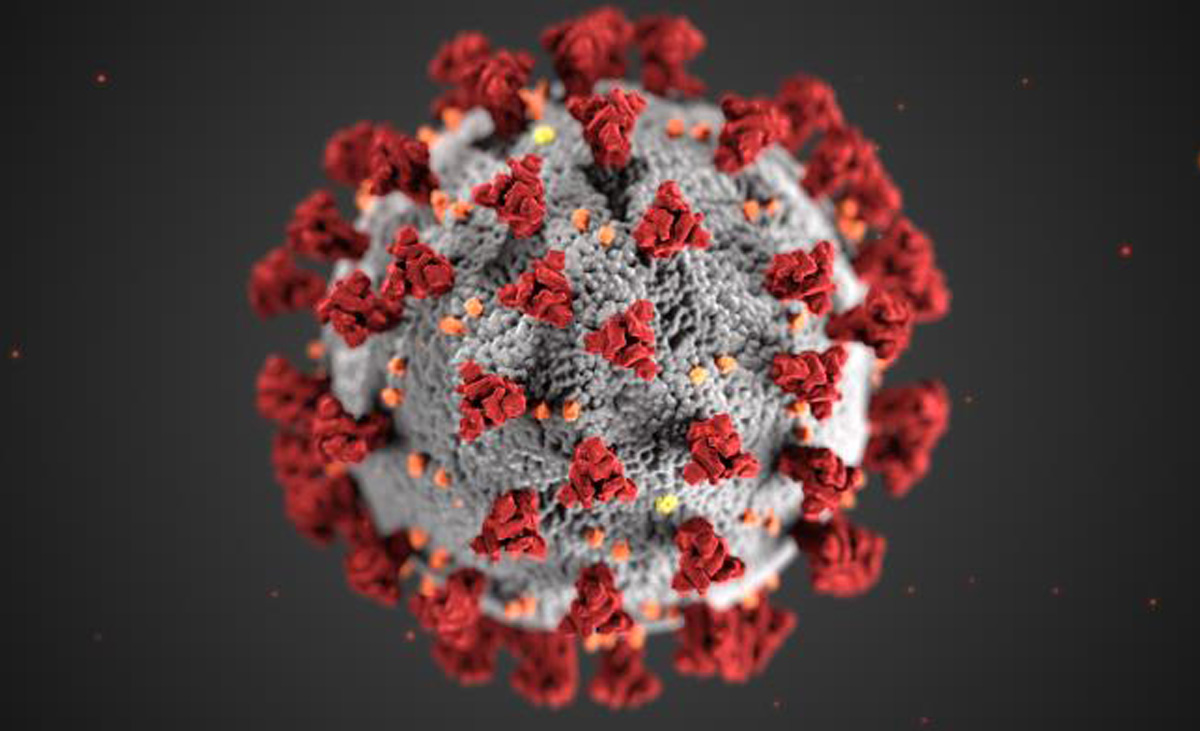
International Team of Researchers Identify Evolutionary Origins of SARS-CoV-2
July 29, 2020| |
An international team of researchers from China, Europe, and the United States has discovered that the lineage that gave rise to SARS-CoV-2, the virus that is responsible for the COVID-19 pandemic, has been circulating in bats for decades and likely includes other viruses with the ability to infect humans.
The team, with combined expertise in recombination, phylogenetic dating, virus sampling, and molecular and viral evolution, found that the lineage of viruses to which SARS-CoV-2 belongs diverged from other bat viruses about 40-70 years ago. Importantly, although SARS-CoV-2 is genetically similar (about 96%) to the RaTG13 coronavirus, which was sampled from a Rhinolophus affinis horseshoe bat in 2013 in Yunnan province, China, the team found that it diverged from RaTG13 sometime in 1969. The team also found that one of the older traits that SARS-CoV-2 shares with its relatives is the receptor-binding domain (RBD) located on the Spike protein, which enables the virus to recognize and bind to receptors on the surfaces of human cells.
David L. Robertson, professor of computational virology at the University of Glasgow said this means that other viruses that are capable of infecting humans are circulating in horseshoe bats in China. He added that SARS-CoV-2's RBD sequence has so far only been found in a few pangolin viruses and SARS-CoV-2's ability to infect humans has not yet been seen in another close bat relative of the SARS-CoV-2 virus.
Robertson further explained that while it is possible that pangolins may have acted as an intermediate host facilitating transmission of SARS-CoV-2 to humans, no evidence exists to suggest that pangolin infection is a requirement for bat viruses to cross into humans. Their research suggests that SARS-CoV-2 likely evolved the ability to replicate in the upper respiratory tract of both humans and pangolins.
For more details, read the news article in the University of Glasgow website.
| |
You might also like:
- Structural Analysis of COVID-19 Spike Protein Describes its Evolution
- Genes Linked to COVID-19 Risk Inherited from Neanderthals
- Scientists Say COVID-19 Coronavirus Has Natural Origins
Biotech Updates is a weekly newsletter of ISAAA, a not-for-profit organization. It is distributed for free to over 22,000 subscribers worldwide to inform them about the key developments in biosciences, especially in biotechnology. Your support will help us in our mission to feed the world with knowledge. You can help by donating as little as $10.
-
See more articles:
-
News from Around the World
- ISAAA Video Shows How to Genetically Engineer a Plant
- Cuba Passes Law to Create Regulating Commission for the Use of GMOs
- German Researchers Decode European Maize Genome
-
Research Highlights
- Gene Switches for Height Identified in Plants
-
Plant
- UC Davis Scientists Use CRISPR Technology to Develop Bull that Produces 75% Male Offspring
- CRISPR-Cas9 Sheds Light on Spikelet Development in Rice
- Scientists Describe Protocol for Multi-gene Genome Editing in Maize
- 132 Research Institutes and Associations Urge the EU to Reconsider Stance on Genome Editing
-
Health
- Moderna's COVID-19 Vaccine Advances to Phase 3 COVE Study
- Study: Heartburn Medicine Doesn't Work as COVID-19 Antiviral
- International Team of Researchers Identify Evolutionary Origins of SARS-CoV-2
-
Read the latest: - Biotech Updates (December 17, 2025)
- Gene Editing Supplement (December 17, 2025)
- Gene Drive Supplement (February 22, 2023)
-
Subscribe to BU: - Share
- Tweet

